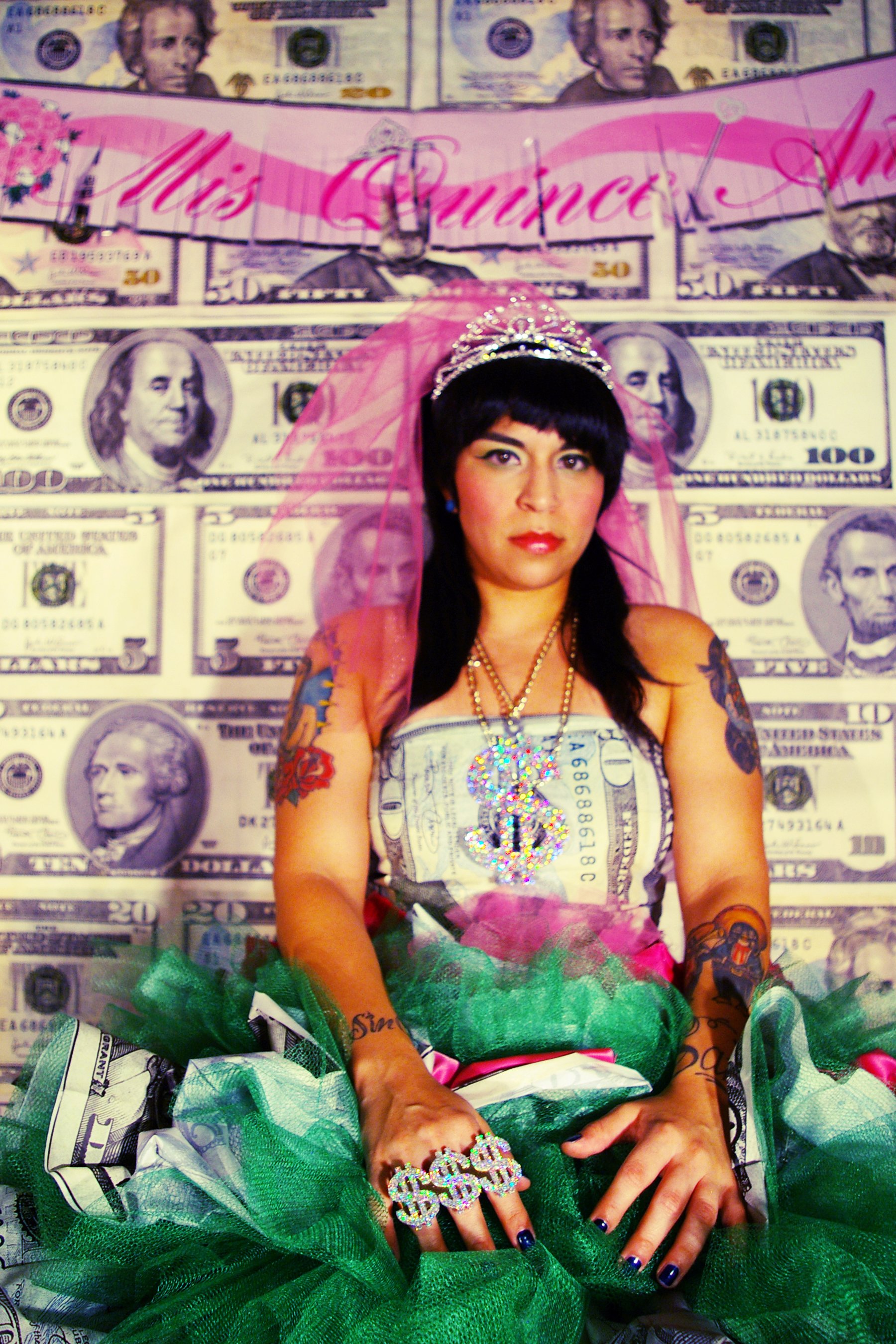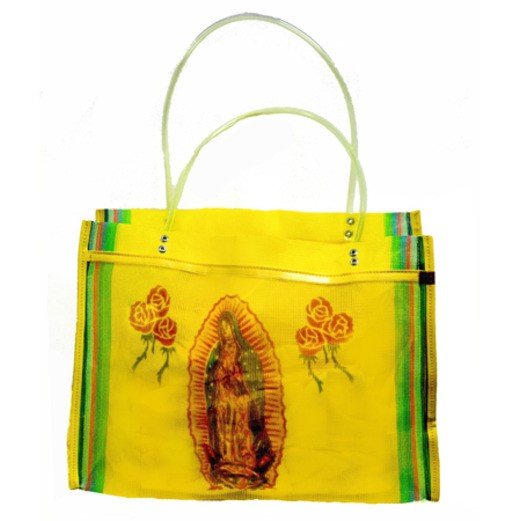Rasquachismo: The Art of Resourcefulness
Artwork: An Ofrenda for Dolores del Rio by Amalia Mesa-Bains
I’ve had a long and complicated relationship with both the US-Canada and US-Mexico borders. My parents migrated to the US from Colombia and Venezuela in the ’80s and ’90s and when I was a child, we left the US and spent 6 years in Canada. There are generational stories and experiences at these borders; they keep me looking back to the physical and metaphoric borderlands that have and will continue to shape my life.
I think that’s why I have such a strong appreciation for cultura fronteriza (border culture) and the Chicano community. I see myself and my family in their conversations around migrant identity and the working class. To celebrate my love of art and my cultural identity, I took a class called “Mexican Art Across Borders” during my senior year of college. This is where I first discovered rasquache and rasquachismo.
Coined within the Chicano communities of the borderlands, rasquachismo is an art form and sensibility that originates from the Chicano working class. Rasquachismo comes from the word rasquache, the English form of the Mexican-Spanish word “rascuache,” originating from Nahuatl. “Rascuache” means poor or vulgar. In his essay “Rasquachismo: A Chicano Sensibility,” Tomas Ybarra-Frausto describes the qualities of rasquachismo as “a sensibility that is not elevated and serious, but playful and elemental. It finds delight and refinement in what many consider banal and projects an alternative aesthetic—a sort of good taste of bad taste.” Rasquachismo is born out of both utility and representation. It is a complete redefinition of class and beauty that challenges the value of art.
Artwork: Self-Portrait by Mari Hernandez
It’s not often that the creation of art and sustainability cross paths in conversation. Sustainability isn't at the center of rasquachismo, but it is an inherent part of rasquache art. A better way to look at it might be a byproduct of survival and resourcefulness. Making use of what we already have has always been a part of Chicano and Latine cultures. Rasquache artists use pieces of their everyday lives to create something new.
“Resilience and resourcefulness spring from making do with what’s at hand (hacer rendir las cosas)” says Ybarra-Frausto. “Limited resources means mending, re-fixing, and reusing everything. Things are not thrown away but saved and recycled, often in different context[s].”
When Rasquache artists use the daily object in their art, they’re not only commenting on our survival strategies but also illustrating how sustainability has been ingrained into our cultures for generations. Being resourceful is part of the art of getting by.
Artwork: Altar for La Virgen de Guadalupe by Hector Sanchez and Roger Garcia (Photo by Nerin Kadribegovic)
Rasquache art can look like the work of Hector Sanchez and Roger Garcia, who take an oxidized bathtub, paint it, and turn it into a shrine for la Virgen de Guadalupe. It can look like the work of Amalia Mesa-Bains who creates an ofrenda composed of dozens of objects like photographs of family, Mexican flags, rosaries, sugar skulls, dirt, and shards of glass. The rasquachismo that Ybarra-Frausto defines is rooted in Mexican-American working class aesthetics.
Rasquachismo is not limited to the use of material produced by the worker to facilitate their life. The aesthetic is defined by objects and experiences that the worker has given meaning. For example, the ofrenda, or offering, is placed on an altar which is usually associated with Dia de Los Muertos, but altars are a staple in many Latine homes.
Carlos Aguilar describes what is normally seen on an ofrenda,
“basic items typically displayed on the ofrendas include: Water, candles, flowers, sugar skulls, the dearly departed’s photos, their favorite meal. The hope is to guide and feed our loved ones’ souls as they venture in their journey to the other side”
These items are part of the everyday; they are not glamorous objects, but tools of survival and memories of life. The visual of an ofrenda is an artwork of religious practice and belief that consists of the conventional items to which rasquachismo gives value. Items that may otherwise be deemed disposable become the keys to traversing the line between life and death.
Cover, OFRENDAS catalogue, with detail of altar installation by Amalia Mesa-Bains. Tomás Ybarra-Frausto research material on Chicano art, 1965-2004. (Courtesy Archives of American Art, Smithsonian Institution)
Rasquache is a lifestyle that has existed within the culture for a long time and can be traced back to indigenous knowledge and practices. It might be viewed as tacky by abuelas or elitist art critics. A few things that might be considered rasquache are putting pots and pans in the oven as storage, using an old cookie container to keep sewing supplies, wearing la Virgen de Guadalupe on a t-shirt, or the giant framed photograph of a statue of La Virgen that my parents keep in the hallway. That was often in the background of pictures of my high school parties.
Although it is most commonly associated with Mexican and Chicano culture, I think a lot of Latin America can relate to the sensibility of rasquache, aunque tal vez las generaciones mayores no quieren llamarse seres rascuaches (although, maybe the older generations don’t want to call themselves rasquache beings). I know that I might see beauty, utility, and cultural identity if I have to take all of the pans out of the oven and put them on the stove when I want to make brownies; my dad would probably think ayyy tan ordinaria, una Americana con ollas en el horno (how tacky, an American with pots in the oven).
Kelly Medina Lopez talks about Rasquachismo in the episode “Rasquachismo: Sustainability Within The Varrio” from the podcast Varrio Voices, she says
“[Rasquachismo is also about] enjoying every moment at its fullest, and thinking about the ways that we can get the most out of every single moment that we are in, and enjoy that and live it to its fullest, because we never know. We’re always under some kind of attack, unfortunately, particularly in the US.”
Living and appreciating every moment that we have is a resourcefulness of life.
“Virgen de Guadalupe Square Mesh Bag,” example of the second degree of rasquachismo.
I love the extravagance, the colors, and, dare I say, the gaudiness of Rasquache art. Rasquache is the art of lived reality; it’s beautiful without being apologetic about where it comes from or what it’s made of. Rasquache art embodies our roots, realities, everything our eyes touch, and our hands recreate.




